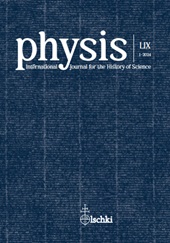Aesthetics of visionaries and engineering : John Wheeler between black holes and it from bit.
P. 209-240
The renowned physicist J.A. Wheeler is known for expressions such as black hole or it from bit, which may suggest that his work was carried out in areas quite remote from practical problems. Much less known, however, is the role that engineering played in the origin and development of his scientific interests, and how it contributed to shaping Wheeler's peculiar style of research. In this paper, I intend to show how, in Wheeler's heuristics, an original and bold speculative inclination was tempered by a sort of engineering-trained eye. If this is quite easily conceivable for the first phase of his career, the nuclear one, it is also true for the second one, consecrated to general relativity.
In those years (ca. 1950s-1970s), Wheeler influenced and encouraged the pioneering work of collaborators who also had previous engineering experience, such as Joseph Weber and Stirling Colgate, whose work would lead to important progress respectively in the detection of gravitational waves and in the understanding of the extreme phases of gravitational collapse. Something similar can be remarked about Wheeler's even later reflections, dealing with quantum foundations and information. Thus, in a precise sense that is articulated in these pages, engineering accompanied the entire career of one of the key figures in 20th-century physics. [Publisher's text]
-
Articles from the same issue (available individually)
-
Information
DOI: 10.1400/297493
ISSN: 2038-6265


